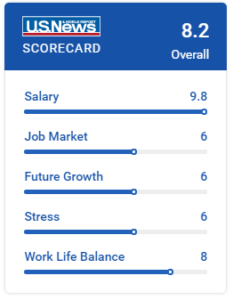Did Obamacare Help the Dental Industry by Offering Affordable Dental Insurance?
February 22, 2017
The healthcare landscape may change dramatically over the next few years or even months. The Affordable Care Act (ACA), or Obamacare, has made some significant alternations to healthcare and health insurance, but it is certainly possible that the healthcare industry will make another giant shift in the near future.
As lawmakers consider change, they should be thinking about how those changes will affect doctors, hospitals, and clinics. They should also consider some of the often-overlooked fields of health insurance, including vision and dental.
Technically speaking, dental insurance is not a required part of the ACA. Instead, it can be an “add-on” or an upgrade option. It is frequently an entirely separate policy that companies offer independently of health insurance. However, children’s dental coverage is a required part of all ACA plans.
In addition, cost assistance offered to many lower-income Americans can be applied toward any health insurance plan that includes dental coverage. That means that even though dental insurance is not required, for some, ACA has increased access. Increased access, however, does not necessarily mean that families are taking advantage of plans with dental options.
Problems with the ACA as it relates to dental care have decreased the overall effect that the ACA has had on the dental industry. Nonetheless, this booming industry did get an additional boost from Obamacare.
The Affordable Care Act and Dental Coverage for Adults

The ACA may not require plans to offer dental care, but many plans do. The American Dental Association conducted a study of 40 states, and it noted that 35.7 percent of medical plans now have either child or family dental benefits. This is in contrast to a rate of 26.8 percent in 2014. In 2014 alone, reports indicate that 1.1 million individuals gained stand-alone dental benefits through the health insurance marketplace. Another 6.7 million Americans gained health insurance, and many plans offered dental benefits as part of their plan package.
Child’s Dentistry and Obamacare

This “loophole” is troubling for the dental industry and may be a major health concern. Dr. Paul Reggiardo, chair of the American Academy of Pediatric Dentistry’s Council on Dental Benefit Programs, noted, “It’s letting kids down in my mind, and it is clearly inconsistent with congressional intent. The intent was to include all children. Now it only includes some.”
A tax “glitch” also caused families in the United States to lose subsidies worth $93.6 million in 2014. Essentially, the problem was that parents could not use their tax credits for stand-alone dental plans, making the propensity to purchase a separate dental plan even lower. Reports now indicate that this problem has been addressed with a change to the tax code, however.
By some estimates created in 2013, 8.7 million children were expected to gain dental benefits by 2018 because of the ACA, reducing the number of children without dental coverage by roughly 55 percent. Of course, these estimates can change drastically with the changing political climate.
Insurance and Increased Dental Visits
Those who have dental insurance are more than two times more likely to seek out dental care compared to those who are uninsured. In addition, those who opt for private insurance are also 20 percent more likely to regularly visit the dentist compared to those who have dental insurance through a public insurance program. These statistics are not all that surprising when you consider that they generally conclude that those who sought out and independently paid for their dental insurance are more likely to have regular dental care. These individuals may be more likely to use dental care regardless.

Some experts are already predicting that massive job losses that will occur in the healthcare and dental industries if Obamacare is repealed. Although the dental industry may suffer, the overall impact will not be as severe as what may be in store for the medical healthcare industry.
Increased Patients and Growth in the Dental Industry

Young adults seem to have purchased the lion’s share of stand-alone dental plans in the marketplace thanks to the Affordable Care Act. This may indicate a renewed interest or understanding of the importance of dental care in overall healthcare. Perhaps the message that many leaders in the dental industry have touted for years—that dental health is an integral part of your overall health—is finally getting through to certain segments of the population.
Despite Problems, the ACA Has Still Been Helpful for the Dental Industry
Experts indicate that part of the reason the dental industry has grown so much in recent years is due, in part, to the Affordable Care Act. As those with access to dental insurance increase, those who purchase and use that insurance also increase. While the dental industry has not seen demand levels rise to the degree of the overall healthcare industry, there has still been a noticeable uptick.
If the “glitches” and problems are addressed, the impact may be even more noticeable. However, with the current political landscape and threat of repealing the ACA, the dental industry may never realize the true implications of the ACA.
[avatar user=”jay.fensterstock” size=”original” align=”left”]Dr. Jay Fensterstock[/avatar]Dr. Jay Fensterstock is a New York dentist who has been practicing dentistry for over 40 years. He graduated from New York University’s College of Dentistry and opened Concerned Dental Care which has now expanded to 9 locations with over 10 affiliate locations over the New York City area. When he’s not helping patients of all ages with their oral health he can be found writing informative blogs while sipping on a cup of hot chocolate (yes it’s sugar free).
Sources:
Elizabeth O’Brien, “Obamacare isn’t good for your teeth,” Market Watch (Jan. 24, 2014), http://www.marketwatch.com/story/obamacare-isnt-good-for-your-teeth-2014-01-23.
Catherine Saint Louis, “A Gap in the Affordable Care Act,” The New York Times (Dec. 16, 2013), http://www.nytimes.com/2013/12/17/health/a-gap-in-the-affordable-care-act.html?_r=1.
HealthCare.gov, “Dental Coverage in the Marketplace,” accessed Jan. 5, 2017, https://www.healthcare.gov/coverage/dental-coverage/.
Kamyar Nasseh et al., “Affordable Care Act Expands Dental Benefits for Children But Does Not Address Critical Access to Dental Care Issues,” American Dental Association: Health Policy Institute (Apr. 2013), http://www.ada.org/~/media/ADA/Science%20and%20Research/HPI/Files/HPIBrief_0413_3.pdf.
Gayathri Subramanian, “Medical Insurance Often Undone by Lack of Dental Coverage,” Santa Fe New Mexican (reprinted from The Washington Post) (Jan. 1, 2017), http://www.santafenewmexican.com/news/health_and_science/medical-insurance-often-undone-by-lack-of-dental-coverage/article_6cb45137-c732-5261-bf3d-68d0e78bd0c7.html.
Jennifer Bresnick, “Dental Care is the Missing Piece of Population Health Management,” HealthITAnalystics (Dec. 28, 2016), http://healthitanalytics.com/news/dental-care-is-the-missing-piece-of-population-health-management.
National Association of Dental Plans, “Who Has Dental Benefits?,” accessed Jan. 5, 2017, http://www.nadp.org/Dental_Benefits_Basics/Dental_BB_1.aspx.
American Dental Association, “Your Guide to Finding and Paying for Dental Care,” Mouth Healthy, accessed Jan. 5, 2017, http://www.mouthhealthy.org/en/dental-care-concerns/paying-for-dental-care.
Rachel Klein, “Tax Code Fix Will Deliver Dental for Millions of Kids,” HealthInsurance.org (July 14, 2016), https://www.healthinsurance.org/blog/2016/07/14/tax-code-fix-will-deliver-dental-for-millions-of-kids/.
“Dentist: Overview,” U.S. News Careers, accessed on Jan. 5, 2017, http://money.usnews.com/careers/best-jobs/dentist.
Eric S. Solomon, “The Future of Dentistry,” Dental Economics, accessed on Jan. 5, 2017, http://www.dentaleconomics.com/articles/print/volume-94/issue-11/features/the-future-of-dentistry.html.
Apex360 Editors, “Top 2015 Dental Industry Trends and 2016 Predictions from the Apex360 Editorial Advisory Board,” DentistryIQ (Nov. 24, 2015), http://www.dentistryiq.com/articles/apex360/print/volume-2/issue-8/introducing-the-apex360-editorial-advisory-board.html.
Andrew Snyder & Keerti Kanchinadam, “A Check-Up on Dental Coverage and the ACA,” HealthAffairsBlog (Mar. 24, 2015), http://healthaffairs.org/blog/2015/03/24/a-check-up-on-dental-coverage-and-the-aca/.






